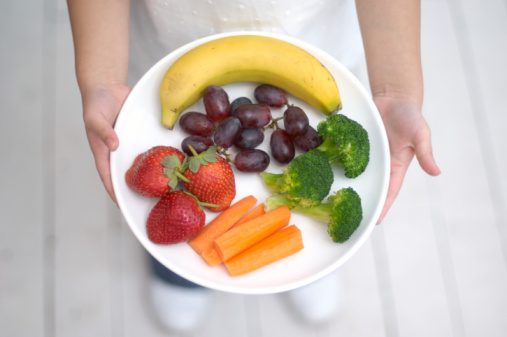
I’ve noticed whenever I’ve traveled to Europe that Europeans love to sit in cafés. They’ll nurse an espresso or two for hours, but they almost never eat in the cafés unless it’s a mealtime. In our American equivalent—the coffee bar—you’ll find that we have larger and much higher-calorie drinks, and there’s a lot more eating.
My observations are just anecdotal, but there are hard data about how we snack in America, and the news isn’t so great. We snack a lot, and we tend to snack on “foods with minimal nutritional value.” That’s nutrition-speak for junk food.
A report on snacking in America, part of the government’s survey “What We Eat in America” and based on the National Health and Nutrition Examination Survey (NHANES), administered during 2007 and 2008, tells us that more of us are snacking now than 30 years ago and we’re snacking more often. Between 1977–78 and 2007–08, the frequency of snacking went from one to 2.2 snacks per day, and the percentage of adults snacking increased from 59 percent to 90 percent. In 2007–08, two out of three adults snacked at least twice daily.
We now get an average of 24 percent of our calories from snacks, and about one in six of us gets more than 40 percent of our calories by snacking. With numbers like these, we can’t afford to consider snacks just “special treats.” On the contrary: if nearly one in four calories we get is eaten outside a meal occasion, the snack is not a treat; it’s a “fourth meal.”
Depending on age, we’re averaging 500 to 600 calories a day just from our snacks. That could be enough to explain the battle of the bulge most adults (and many kids) are waging.
Most of Our Snacks Are Junk
Here’s where things get interesting. Men and women both get more than half their snack calories from four groups of foods: alcoholic drinks; sugar-sweetened drinks; savory snacks (chips, pretzels and the like); and cake/pies/pastries/cookies and candy. Within these groups, men tend to drink more booze, women eat a few more chips and cookies, but overall, men get 58 percent of their snack calories from these food groups and women get 55 percent from them.
Chatting in a café for hours while nursing a tiny espresso isn’t a luxury most people have time for today, although I do like the idea of slowing down a bit, having more in-person conversation and making snacking a more healthful part of our eating.
Bottom line: No need to give up snacking. Snacking is here to stay, but since it is, our snacks need some rehab. We need to treat snacks like the “fourth meal” they are and make them count.
If you do, you’ll cut your daily calories and really boost the quality of your diet.
Aim for your snacks to total fewer than 300 calories a day, and no more than 200 calories per snack. This pretty much cuts out the empty-calorie drinks, most regular-sized candy bars and increasingly large bags of chips. For beverages, sugar-free is the way to go. But keep in mind, these “diet” drinks have no nutrients. Why not use snacks in a smarter way to make up for the nutrients the other three meals we eat usually don’t provide enough of (especially the way we eat them)? Most adults don’t get enough fiber, calcium, vitamin D or potassium in their diets, so foods with these nutrients are an ideal place to start renovating our snacks.
Here are some great options that can fill the gaps in both your stomach and your diet:
- Fat-free Greek yogurt—loaded with protein, and a good calcium boost.
- A handful of almonds. (Seriously, about 23 of them make an ounce.) Measure out portions; don’t nosh mindlessly.
- Fresh fruit—any fruit. Eating fresh fruit is not where snacking goes awry. It’s part of the solution. Whole fruit, as opposed to juice, stays in your stomach longer and keeps you feeling full.
- Healthy fats combined with veggies. For example, a teaspoon of peanut butter and celery helps keep you sated longer than celery alone. But remember to measure the peanut butter. Keep it to one or two teaspoons.
- A fat-free cappuccino or latte—loaded with potassium, calcium and vitamin D.
- Half a cup of high-fiber cereal with half a cup of milk.
- Flavored water or flavored seltzer. It’s okay to “spike” it with an ounce or two of juice—but only an ounce or two, to limit calories.
- Alcohol. Keep it to one drink daily for women and two for men. More than that, even if it’s red wine, won’t help you, and the calories add up.
- Fill an empty individual tin of mints with shelled pistachios and raisins. Keep it in your purse, briefcase or gym bag and grab it instead of a high-calorie impulse snack such as cookies or cake.
The most critical aspect of real-world snacking is planning ahead. Most people know a good snack from an unhealthy one. But many times you’re faced with a vending machine or buffet with no healthful choices. It’s easy to pack nuts and raisins, for example. They don’t take up much room and they don’t go bad quickly.
Snacks don’t need to be the enemy. If you give them more thought, they can actually help you eat more healthfully and reach or maintain optimal weight since you won’t be famished every time mealtime rolls around.

